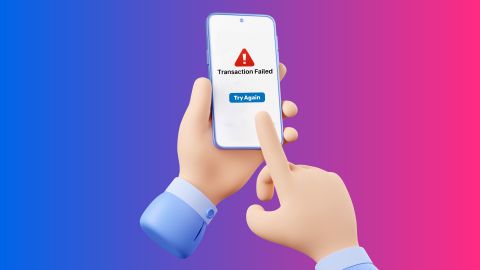CNG and LPG differ in composition, usage, and environmental impact.
Difference Between CNG and LPG
-
CNG (Compressed Natural Gas) and LPG (Liquefied Petroleum Gas) are two widely used alternative fuels.
CNG and LPG are both popular fuel options, with CNG being a cleaner choice for vehicles and LPG mainly used for cooking at home. While understanding the difference is important, when it comes to managing your household needs, booking LPG gas is quick and easy with Bajaj Finserv’s BBPS platform Bajaj Pay, ensuring convenience at your fingertips.
CNG is primarily made up of methane, a natural gas that is compressed to high pressure for storage and transportation. It is commonly used in vehicles, offering a cleaner and more eco-friendly option compared to petrol and diesel. CNG emits significantly fewer harmful pollutants, such as carbon dioxide and nitrogen oxides, making it an environmentally friendly choice. In addition to its use in transportation, CNG is also employed in industrial applications and power generation, making it a versatile energy source.
On the other hand, LPG consists mainly of propane and butane, which are hydrocarbons derived from both natural gas processing and crude oil refining. Unlike CNG, LPG is stored as a liquid under moderate pressure in gas cylinders. It is commonly used for cooking in households and industries, as well as in some vehicles that run on autogas. While LPG provides a higher energy output compared to CNG, it is less environmentally friendly due to higher emissions of carbon dioxide. However, LPG remains a popular choice due to its availability, ease of storage, and high energy density, making it ideal for heating and cooking applications.
Know about what CNG and LPG
CNG (Compressed Natural Gas) and LPG (Liquefied Petroleum Gas) are both gases used as fuel, but they have different properties and applications. CNG is mostly methane, stored at high pressure, and is commonly used in vehicles. LPG, a mixture of propane and butane, is stored in liquid form and is used for cooking and heating. Both are cleaner alternatives to traditional fuels like petrol and diesel.Difference between CNG and LPG
The difference between CNG and LPG lies in their composition, storage, and uses. CNG is primarily composed of methane, while LPG consists of propane and butane. CNG is stored in high-pressure cylinders, while LPG is stored in liquid form under moderate pressure.- Energy content: LPG has a higher energy content per cubic metre than CNG, making it more efficient for heating and cooking.
- Storage: CNG requires more storage space due to its gaseous state, while LPG is more compact because it is stored as a liquid.
- Applications: CNG is mainly used in vehicles, while LPG is used for domestic cooking, heating, and in industrial applications.
- Environmental impact: Both are cleaner alternatives to petrol and diesel, but CNG produces fewer carbon emissions than LPG.
How CNG and LPG are produced
CNG is primarily produced by filtering natural gas and compressing it to a high pressure, which allows it to be stored in cylinders. On the other hand, LPG is produced through a refining process of crude oil and natural gas, where it is separated and stored under high pressure to be converted into liquid form. While both gases are derived from fossil fuels, CNG tends to have fewer impurities due to its simpler production process.Uses and applications: Where CNG and LPG are commonly used
CNG is primarily used in transportation, especially in cars, buses, and trucks, as it burns cleaner and reduces air pollution. It is also used in some industries as a source of energy for machinery and heating. LPG, however, is more commonly used for cooking, heating, and as fuel in some industrial processes like metal cutting and drying. Both gases are used in homes, businesses, and industries, but their applications vary depending on energy needs.Safety and risks: CNG vs. LPG
Both CNG and LPG are considered safer compared to traditional fuels like petrol and diesel, but they have distinct risks. CNG is lighter than air, so in the event of a leak, it disperses quickly and is less likely to cause a fire. LPG, being heavier than air, can accumulate in low-lying areas and pose a greater risk of explosion if a leak occurs. Proper maintenance and usage precautions are essential for both gases to ensure safety.Vehicle compatibility: Choosing CNG or LPG for your car
When it comes to vehicles, CNG is often preferred for cars as it is a cleaner and cheaper alternative to petrol or diesel. However, vehicles running on LPG are also common, especially in countries where LPG is more readily available. CNG vehicles generally require specialised engines or conversion kits, while LPG can be used in most petrol engines with minimal adjustments. Vehicle owners must choose based on fuel availability, vehicle compatibility, and their usage preferences.Advantages and disadvantages of CNG and LPG
Advantages of CNG:- Eco-friendly: CNG produces fewer pollutants compared to petrol or diesel.
- Cost-effective: CNG is cheaper than petrol and diesel, making it a budget-friendly option for daily commuters.
- Efficiency: CNG-powered vehicles are more efficient in fuel consumption.
- Storage space: The need for high-pressure cylinders makes CNG vehicles bulkier.
- Infrastructure: CNG refuelling stations are less common than LPG stations.
- Higher energy content: LPG has a higher energy density than CNG.
- Wide availability: LPG is more widely available for domestic and industrial use.
- Compact storage: LPG can be stored in smaller containers due to its liquid state.
- More expensive: LPG tends to be more expensive compared to CNG.
- Safety risks: Being heavier than air, LPG poses more risks in the case of a leak.
Conclusion
Understanding the difference between CNG and LPG helps consumers make better choices for their vehicles and homes. Both gases offer significant benefits, such as being more eco-friendly than traditional fuels. Whether you're looking for a cleaner fuel for your car or seeking a cost-effective cooking solution, both CNG and LPG have their unique advantages and applications.
-
Recharge and Pay Bills
Mobile Prepaid
Mobile Postpaid
Broadband Bill Payment
Electricity Bill Payment
Bajaj Finserv App for All Your Financial Needs and Goals
Trusted by 50 million+ customers in India, Bajaj Finserv App is a one-stop solution for all your financial needs and goals.
You can use the Bajaj Finserv App to:
You can use the Bajaj Finserv App to:
- Apply for loans online, such as Instant Personal Loan, Home Loan, Business Loan, Gold Loan, and more.
- Explore and apply for co-branded credit cards online.
- Invest in fixed deposits and mutual funds on the app.
- Choose from multiple insurance for your health, motor and even pocket insurance, from various insurance providers.
- Pay and manage your bills and recharges using the BBPS platform. Use Bajaj Pay and Bajaj Wallet for quick and simple money transfers and transactions.
- Apply for Insta EMI Card and get a pre-approved limit on the app. Explore over 1 million products on the app that can be purchased from a partner store on Easy EMIs.
- Shop from over 100+ brand partners that offer a diverse range of products and services.
- Use specialised tools like EMI calculators, SIP Calculators
- Check your credit score, download loan statements and even get quick customer support—all on the app.
Frequently asked questions
What are the main differences between CNG and LPG?
CNG is primarily methane and stored as gas under high pressure, while LPG is a mixture of propane and butane stored as liquid under moderate pressure.
Why do we use LPG not CNG?
LPG is often preferred over CNG due to its higher energy density, easier storage in liquid form, and wider availability. It is more convenient for household use, especially for cooking and heating, while CNG is primarily used in vehicles.
How does CNG work?
CNG (Compressed Natural Gas) is stored at high pressure and used as a fuel for vehicles. It is cleaner than petrol and diesel, with fewer emissions.
What are the uses of CNG?
CNG is mainly used in vehicles, such as cars, buses, and trucks, for cleaner and more economical fuel options.
What are the risks of LPG?
LPG is heavier than air, and in the event of a leak, it can accumulate in low areas, posing a higher risk of explosion compared to CNG.
Show More
Show Less




